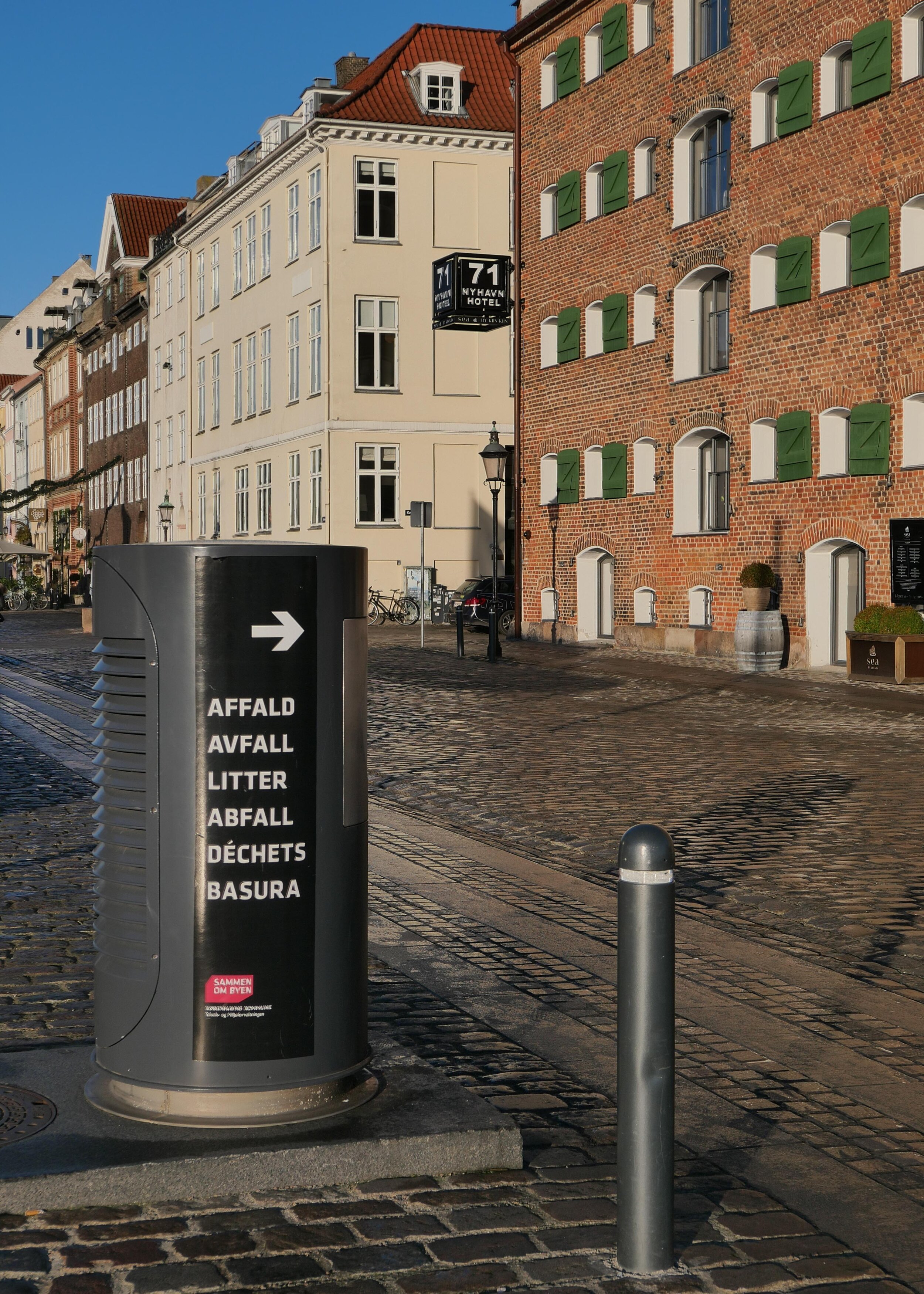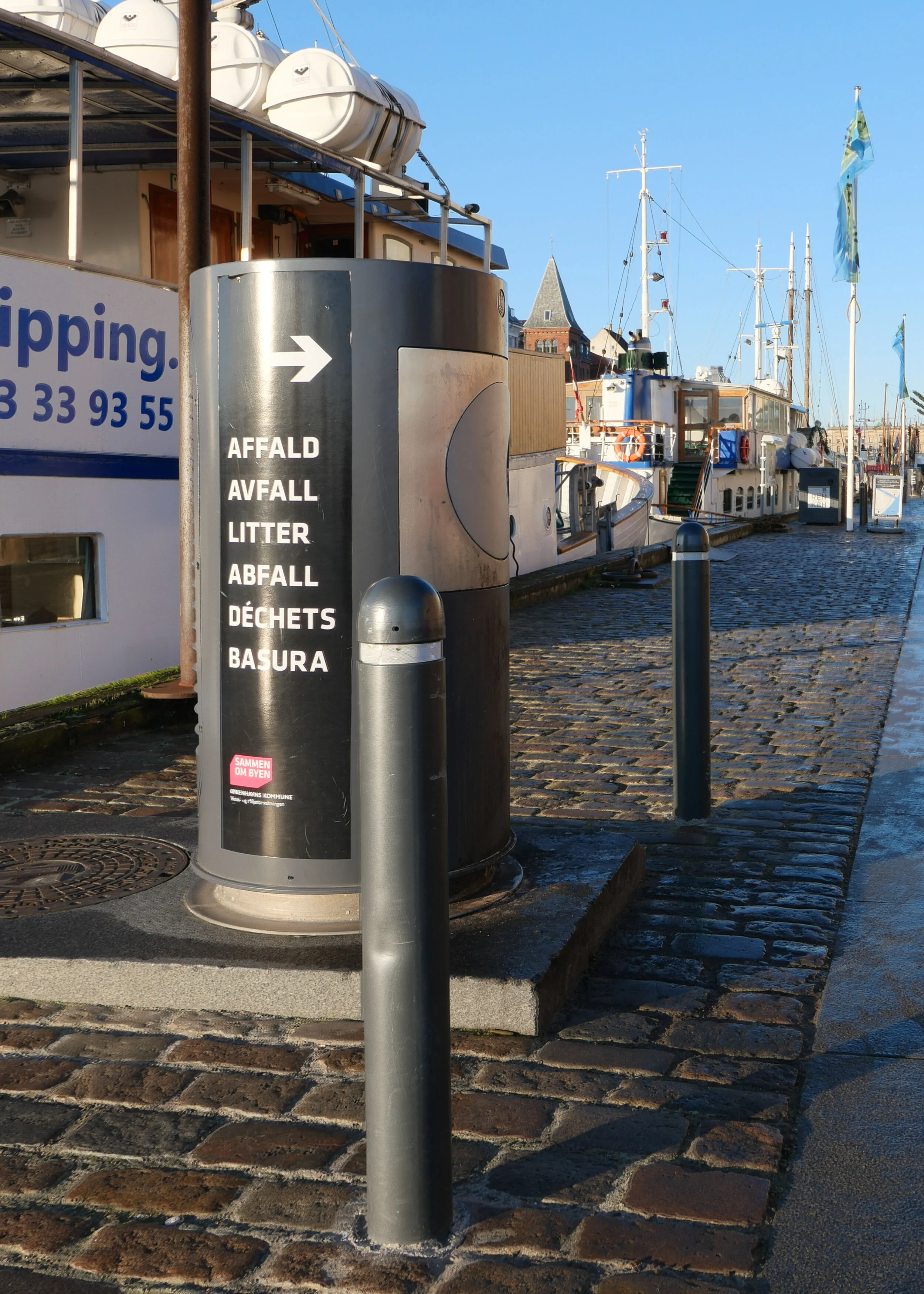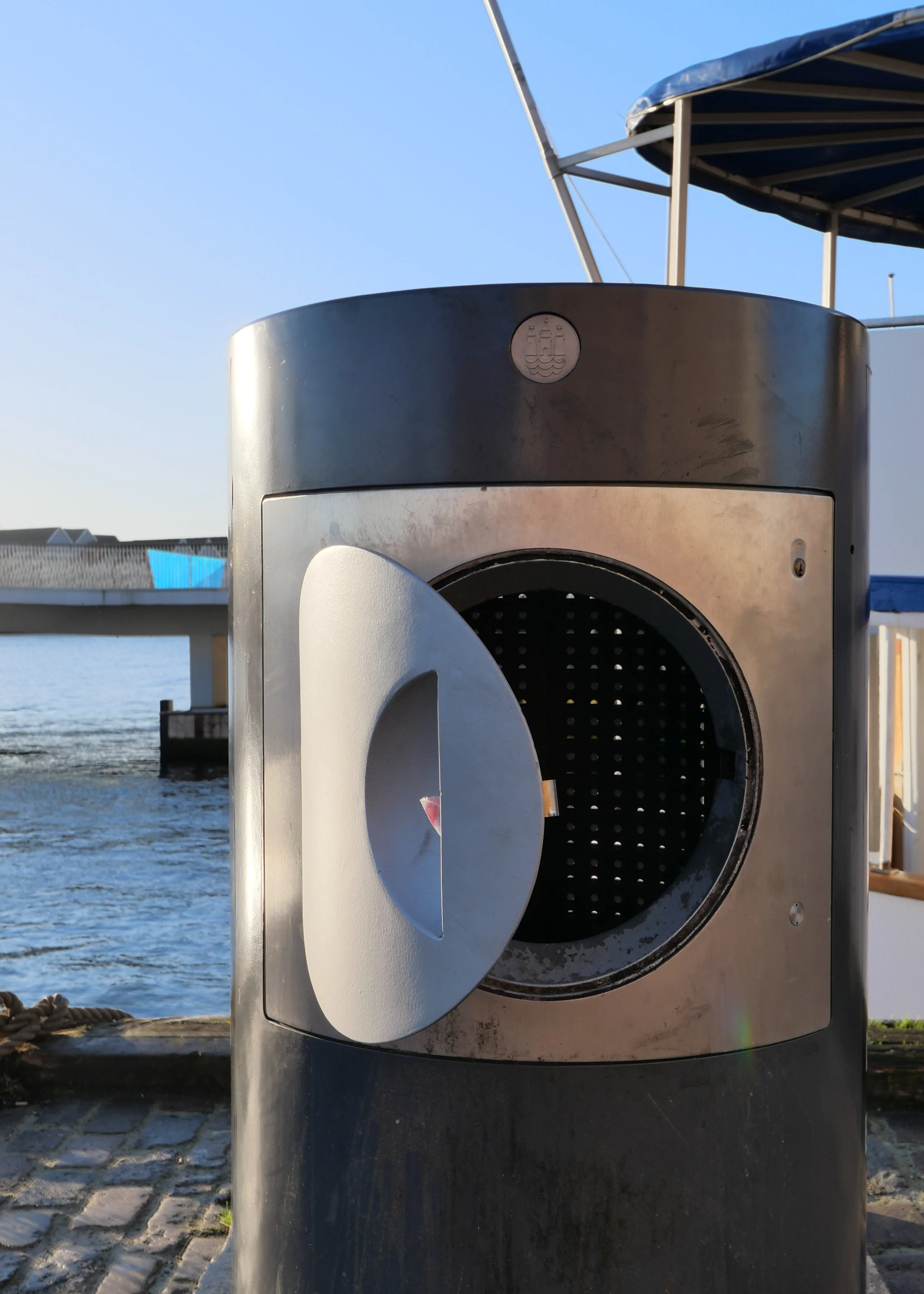waste collection on Nyhavn
/The photograph of rubbish piled around a street bin - posted with a quotation from Paul Mazur on Black Friday - was actually taken on the morning of Black Friday.
I had planned to post the quote because it seemed appropriate for this odd day that was contrived by marketing men in the States to make people spend. It’s the day after Thanksgiving - that public holiday when you spend time with families rather than spend money shopping - so presumably Black Friday is the bargain sale to hook you back into spending, just in case you forgot how spend having just had a day off. Is the message here that if you buy something you don't need then at least buy it at a knock-down price? Or maybe if you don't actually need it then by offering it at a sale price you might be persuaded to change your mind.
Anyway, I was heading out to take a photograph at the recycle centre on Amager - to go with the quote - but then there was this on the quay right outside my front door.
Everything had been abandoned - including a large and fairly new suitcase along with a good small metal case and various pictures in frames - so it looked as if someone is moving on from one of the apartments around here and what they were not taking with them had been dumped on the pavement sometime during the night. At least it gave me as good an image as any to represent our throw-away society.
Nyhavn, or New Harbour, was constructed in the 1670s for ships to load and unload goods. Over 400 metres long and 28 metres wide - it runs back from the main open harbour to the large public square of Kongens Nytorv
In any case, the bin system here is of interest and I had been thinking about a post for some time. It might look like an ordinary street bin but it's one of a line of bins along the quay that are the above-ground part of a sophisticated waste system from ENVAC.
When rubbish is dropped in, it doesn't go into a basket or inner bin that has to be emptied but it drops down into a buried pipe that is 500 mm in diameter and when the bin is full, triggered bt a level sensor, the waste is drawn through by vacuum to a service access point set down into the road at the end of the quay.
Nyhavn has large city blocks running back from the harbour on either side and is one of the most densely built up parts of the city with tightly-packed back buildings and small courtyards with homes and offices behind the street frontages. Not only is there little space for large modern waste bins in these yards but there is also a problem getting to the courtyards to empty any bins to take away waste. The quay, on this the north side of Nyhavn, was pedestrianised in the 1980s and although there is access for deliveries, the quay is normally thronged with tourists and there are around thirty restaurants just along this side and most of them have umbrellas and chairs and tables outside that are tightly packed together and most are there year round, so getting through to the archways, to get into and out of the courtyards, is difficult.
The only clue that the bins might not be ordinary street bins is the size - large for a street bin - and the slightly unusual port-hole style door but, presumably, very few tourists stop to wonder why.
They are 1.36 metres high and just over 70cm in diameter and are designed to take all the household waste from the apartments above the restaurants and from the apartments in the inner courtyard buildings - so some 150 apartments in total. That waste is dropped in through the small round hatch. For commercial waste - from the restaurants and bars - they have keys to open the full square opening to put in larger bags of rubbish and packaging.
Designed by Erik Brandt Dam and installed in May 2012 - when the system was upgraded - there are eight large waste bins along the quay - along the 760 metres from Kongens Nytorv to the harbour - with eight smaller bins at intermediate intervals for street litter. These smaller bins look more like traditional street bins, with narrow slots for rubbish on each side, but they also drop their contents down into the system.
The Nyhavn waste system, with sixteen bins and the service point down at the theatre end of the quay, deals with 60 tonnes of waste a week.
bins for the new ENVAC waste system in the Bella Quarter in Copenhagen
The advantage is that the waste is dealt with quickly and cleanly and few people are disturbed when the system is emptied but one drawback is that there is less incentive, with this Nyhavn set up, for people to sort their rubbish for recycling. On the quay, there is now one large standard recycle bin for glass, tucked away round a corner, close to the Theatre, down near the main harbour, but otherwise plastic, paper and cardboard, metal and batteries have to be taken to recycle points several blocks away - the nearest are on the other side of the harbour - or people will put everything through the ENVAC system to end at the incinerator.
A decade ago this system was seen as cutting-edge for waste disposal - good because waste was not going to landfill but to a district incinerator as fuel for the generation of hot water for the district heating system - but for new residential areas in Copenhagen there is now an opportunity to build in more ambitious waste collection systems.
In a new development in Ørestad - for the courtyards and pedestrian streets in the Bella Quarter - ENVAC are installing a waste system where there are not single bins but five separate bins at each waste collection point and each marked for separate and different waste to be recycled so residents can sort out waste quickly and easily - just outside their apartment. Then, as with the Nyhavn set up, it is drawn by vacuum to a service point where it is collected for processing.
This keeps the area close to homes free of smells and free of the lorries that take away the waste. According to the company web site, the system can daw rubbish through a distance up to 2 kilometres.
Another problem in Nyhavn is that restaurant staff, for understandable reasons, tired and at the end of a long work shift, drag out rubbish and force it down through the hatch so the bins do get blocked. It triggers a sort of waste indigestion with lots of weird noises coming up from underground.
Restaurants should use smaller rubbish bags but that would mean more trips between the kitchen and the bin.
Some people fail to realise that underground, just below the bin, the vertical drop has to take the waste through a right angle to go into the horizontal pipe that runs along to the service point so I have seen some ridiculously long and inflexible things being forced through the hatch and then the service team have to come out and sort out the blockage. It was only recently that I realised that they can control the pumps for the pneumatics remotely from the van … so clear a bit … suck a bit … repack a bit …. suck a bit until the blockage is cleared. In Danish the vacuum system is called affaldssug and Google translates this rather literally as ‘waste sucks’ ….. a good motto for any movement lobbying against conspicuous consumption.















